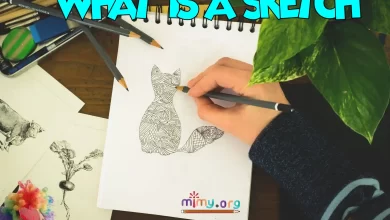How to Work Out Draw Length: Unlocking Your Perfect Archery Fit
Wondering how to work out draw length for your bow? Discover the simple steps to measure your draw length accurately, optimize your archery performance, and boost your confidence on target.
Ever found yourself puzzled by the term draw length while shopping for a bow or tuning your archery setup? You’re not alone! Whether you’re a newbie or a seasoned archer, knowing how to work out draw length is crucial to getting that sweet spot where comfort meets precision. Getting this right doesn’t just improve your aim—it can prevent injury and maximize the power you put into each shot.
So, what exactly is draw length, and how do you figure it out without a fancy measuring tape or an archery coach staring over your shoulder? Let’s break it down in an easy, step-by-step way that’ll have you nocking arrows like a pro in no time.
What Is Draw Length, Anyway?
Before diving into how to work out draw length, let’s understand what it means. Simply put, your draw length is the distance between the bowstring at full draw and the deepest part of the grip on your bow. Think of it as the length you pull back the string before releasing the arrow.
Why’s it so important? Because your draw length influences everything from arrow speed and trajectory to accuracy and comfort. Pull too short, and you’re not unleashing your bow’s full potential. Pull too long, and you risk overextending yourself, causing poor form and potential injury.
How to Work Out Draw Length: The Basics
Here’s the straightforward method you can try at home or in the field, with minimal gear:
Step 1: Measure Your Wingspan
Stand tall with your arms stretched out horizontally, fingers extended. Ask a friend to help you measure from the tip of your middle finger on one hand straight across to the tip of your middle finger on the other.
Step 2: Calculate Draw Length
Now, take your wingspan in inches and divide by 2.5. Voila! That’s your estimated draw length in inches.
Example: If your wingspan is 70 inches, your draw length would be 70 ÷ 2.5 = 28 inches.
Step 3: Double-Check with a Bow
If possible, check your calculated draw length with a real bow and arrow setup. Pull the bowstring back to your estimated length and see how it feels. Is your elbow aligned, and do you feel comfortable? If not, adjust slightly up or down.
The Why Behind the How: Why Is Measuring Draw Length So Crucial?
It’s not just a random number pulled from thin air. Your draw length impacts:
-
Arrow Speed: Longer draw lengths allow for more stored energy, meaning arrows fly faster and hit harder.
-
Accuracy: A correct draw length helps you maintain consistent form shot after shot.
-
Comfort: Prevents overstraining muscles and joints, reducing the risk of injury.
-
Equipment Longevity: Helps avoid unnecessary wear on your bow and arrows.
How to Work Out Draw Length with a Simple DIY Method
If you’re out in the wild or don’t have measuring tape handy, here’s a neat trick that’s saved many archers:
Step 1: Use Your Arm Span and Finger Position
Stand against a wall with your arms fully extended. Mark the spot where your middle fingers reach.
Step 2: Measure the Distance to Your Shoulder
Grab a ruler or string and measure from your middle finger to the corner of your mouth or chin (whichever feels natural when aiming).
Step 3: Add 1.75 Inches
This extra bit accounts for the bow’s grip and the position of the string.
This method might not be textbook perfect but can get you close enough to enjoy your shooting session.
How to Work Out Draw Length for Different Bow Types
Whether you’re wielding a recurve, compound, or traditional longbow, draw length matters differently. Here’s a quick breakdown:
-
Recurve Bows: Draw length needs to be precise because the bow’s power curve depends heavily on it.
-
Compound Bows: Often adjustable, but setting it to your correct draw length maximizes performance and reduces strain.
-
Longbows: More forgiving, but knowing your draw length still improves consistency and comfort.
Tips and Tricks: Fine-Tuning Your Draw Length
-
Use a draw length arrow with markings to check where the arrow nocks when you’re fully drawn.
-
Get a professional fitting at an archery shop if you’re unsure. Sometimes, a few tweaks make a world of difference.
-
Listen to your body! If you feel shoulder pain or awkwardness, your draw length might be off.
-
Keep in mind that your draw length might change slightly as your form improves.
Common Questions About How to Work Out Draw Length
Q1: Can draw length change over time?
Absolutely! As you build muscle and improve technique, your comfortable draw length can shift. Regularly check your length, especially if you start feeling discomfort.
Q2: What happens if my draw length is too long?
You risk injury, poor form, and inconsistent shooting. It can also make the bow feel heavier and harder to pull.
Q3: Can I use the same draw length for different bows?
Not always. Each bow type might require slight adjustments for optimal performance.
Q4: Is there a difference between men’s and women’s draw lengths?
Draw length depends more on body measurements than gender, though women typically have shorter draw lengths due to smaller frames.
Conclusion
Getting your draw length right is like finding the perfect rhythm in a dance—once you nail it, everything flows smoother. Whether you’re just starting out or tweaking your gear for competition, knowing how to work out draw length is the foundation for archery success. Remember, it’s part science, part feel, and a dash of trial and error. So, grab your tape, stretch those arms, and get ready to hit the bullseye with confidence!




